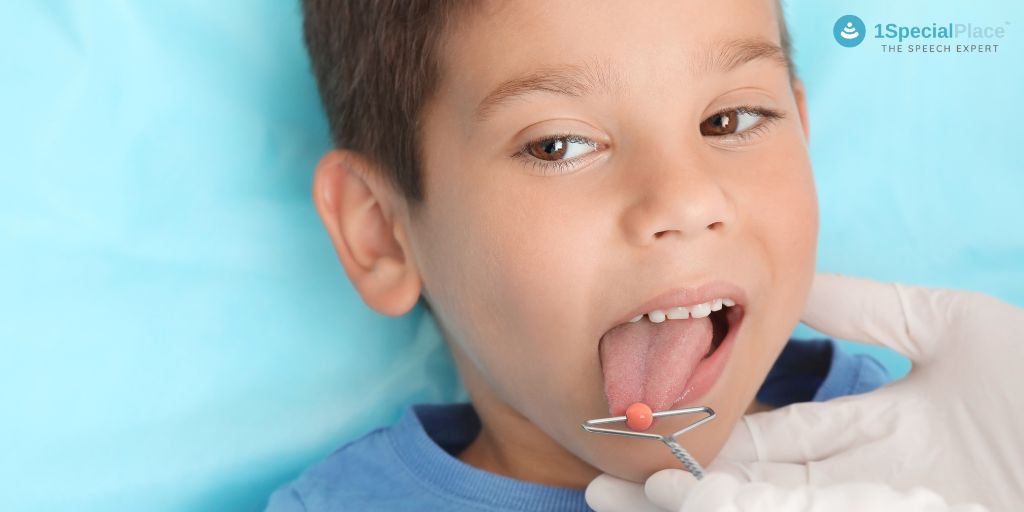
Tools for Speech Impediments
How does a tool help in speech therapy?
Tools are an integral part of speech therapy. The main goal while working on the speech sound production is to train the tongue and the other articulators to attain the correct placement and movement.
Earlier, speech therapy techniques focused on teaching a sound using visual and auditory cues (by watching the articulators and listening to the sounds).
Off late, the research suggests that an additional tactile-kinesthetic cue (feeling the articulators & their movements) assists in better learning of the speech sounds. It also makes the acquisition faster.
Tools available for speech therapy
There are a wide variety of tools designed for improving speech. These tools provide direct physical guidance to the articulators and give additional tactile-kinesthetic cues to produce the sounds.
The Majority of these tools also work on feeding skills, since both speech and feeding are interrelated.
Talktools have a wide range of tool kits available for Oral Placement Therapy. To know more about Oral placement Therapy, please click here.
Here are some of the helpful and widely used tools for speech therapy:
1. Speech Buddies
These tools have specific targets that help attain the correct tongue shape for the specific sounds.
They are available for five specific sounds; ‘l’, ‘r’, ‘s’, ‘sh’ and ‘ch’. These tools are easy to use.
They show great results when used for just ten minutes thrice a week with the help of a qualified speech therapist.
Anyone above three years can make use of these tools.
Children above five years can even use these tools all by themselves with little guidance.
2. Talktools Bilabial Shapes
They help to provide tactile cues to the lips for producing the bilabial sounds (‘m’, ‘p’, and ‘b’).
These tools come in different shapes and colours. The square shape helps to elicit ‘m’ sound, the triangle shape helps with ‘p’ sound and the circle helps with the ‘b’ sound.
The color and shape differences help in easy association with their target sounds.
3. Talktools Tactile Tubes
These tubes help in achieving the lip rounding required for the production of vowels. They are available for ‘oo, oh, and ah’ vowels.
The diameter of the three tubes varies depending on the mouth opening required for each of the vowels.
The Apraxia shapes and tubes are effective for children with apraxia of speech, oral sensory issues, and poor muscle tone.
We can use the shapes and the tubes separately or in combination to produce syllables. This helps with an easier transition from one sound to another.
4. Talktools Apraxia Blocks
These are a set of color-coded bite blocks. They come in different sizes and help produce vowels (ee, ih, eh, uh, ah).
These blocks help in achieving graded jaw stability.
It is necessary to attain stability at different jaw positions in order to produce the vowels correctly.
5. Talktools Horn Kit
It consists of a series of horns. These tools help to increase the airflow required to produce specific speech sounds.
They also help to gain the airflow for prolonged speaking.
It also helps to reduce drooling and in eliminating tongue thrusts.
6. Talktools Straw Kit
This straw kit consists of eight straws and we use them in a hierarchy.
Practicing straw drinking helps in achieving lip protrusion, tongue retraction, and graded jaw opening which are essential for the correct production of many speech sounds.
7. Chewy Tube
The main purpose of a chewy tube is to improve the biting and chewing skills.
The tubes are available from soft to hard textures and are also coded in different colours and shapes.
The yellow chewy tube is for individuals with smaller jaw openings (infants and young children). It is also used for children who have a low tolerance to oral tactile stimulation. It has a hollow, narrow stem.
The red chewy tube can be used by older children and adults. It has an added texture on the stem and is wider than the yellow tube.
The orange P and Q chewy tube allow infants and young children to practice biting and chewing. The stem portion helps with biting on one side and the curved portion promotes biting/chewing on both sides.
The green chewy tube is designed to provide extra sensory input with the raised dots on its shaft. It is also harder to bite than the yellow and red chewy tubes.
The blue chewy tube has a smooth surface. It is the largest and firmest chewy tube. It can be used by adolescents and adults with oral motor sensory issues.
8. Talktools Tongue Tip Elevation/Lateralization Tool
This tool has a target bead that can be moved either horizontally or vertically using the tongue tip.
It helps to make sounds such as ‘t,d,n,l,s,z,ch,j’ etc. that require the elevation of the tongue to touch the teeth or palate.
You can buy speech therapy kits here by speech gears
9. Talktools Tongue Depressor
The Talktools tongue depressor is a tool that helps to acquire lip closure and also to improve jaw stability.
It also comes with added sensory inputs such as textured surface and flavour etc.
10. Nose flute
The nose flute helps to work on volitional airflow through the nasal passage in children who have difficulty producing nasal sounds (m,n, ng, etc.)
It is helpful for kids whose speech sounds hypo-nasal.
It also helps to reduce mouth breathing.
11. Talktools Jiggler
They are effective for increasing the sensory awareness on the lips, and the jaw and also help to reduce muscle tightening on the tempero-mandibular joint.
Tooktools has come up with a set of four different jugglers. These tools can be used to improve lip rounding, lip protrusion, lip retraction, and tongue retraction, in addition to the additional sensory input.
These can be used to work on the following speech sounds / /oo/ /oh/ /w/ /r/ /sh/ /ch/ /m/ /b/ and /p/.
12. Duration Tubes
d goal is to blow the ball through the tube at increasing tube lengths hence improving the abdominal grading for speech.
13. Honey bear drinking cup
It comes with a straw and is useful for children who do not know how to drink through a straw.
It improves tongue retraction required for speech.
14. The Z-vibe:
The Z-vibe helps to provide tactile stimulation to the oral structures (lips, gums, cheeks, tongue).
It also provides localized tactile cues while teaching speech sounds.
It comes with different forms of tips, each targetting a specific skill.
15. SpeechGears Tongue-steer:
It helps position the tongue in the right place to articulate a sound.
It has three dots to provide sensory stimulation to the sides of the tongue and helps to provide tactile stimulation.
16. SpeechGears Talk-Tip:
This device helps to elevate the tongue tip to touch the alveolar ridge and hence helps with the production of sounds such as t, d, n, l, s, and z.
17. Speech Gears Hickey
It is a chewing tool and it covers the mouth completely.
The child can chew this using incisors, canines, premolars, and molars.
This helps to improve jaw strength and also to reduce oral sensory issues.
18. The infant finger toothbrush
The infant finger toothbrush comes with soft bristles.
It helps to provide sensory stimulation and also helps to teach chewing skills.
There are a variety of speech tools readily available in the market and most of them come with instructions on how to use them. It is important to clearly understand what each of these tools is made for and how to work with them. To get the best results, it is better to use these tools under the guidance of a speech and language therapist.
If you are working to improve your child’s pronunciation skills, then have a look at this article.
- AAC for Children with Autism - December 22, 2022
- Tools for Speech Impediments - November 25, 2022
- Voice TipsFor Teachers During Online Teaching - October 4, 2022



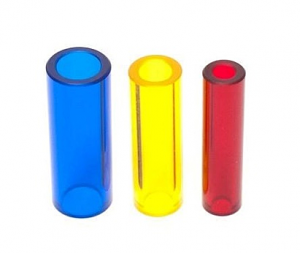
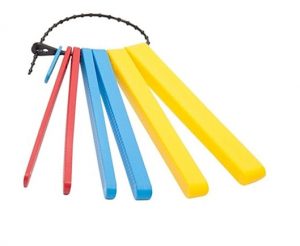
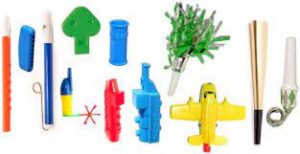
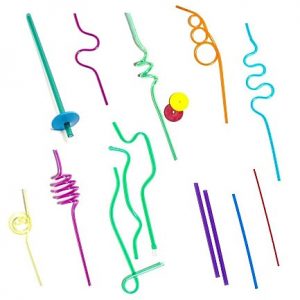
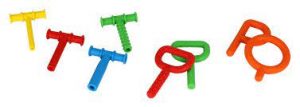
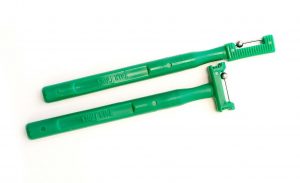



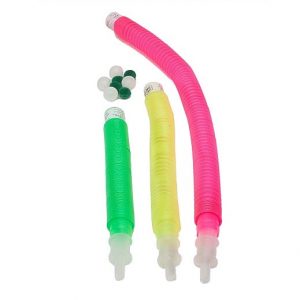
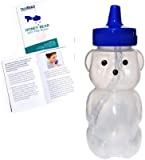
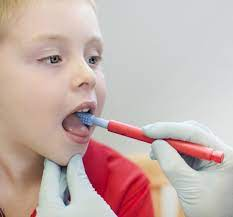
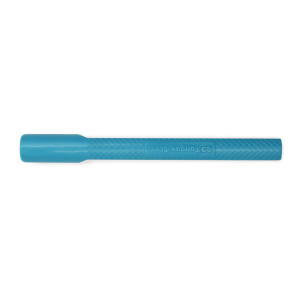
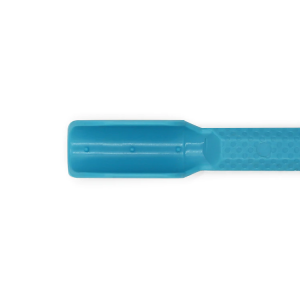
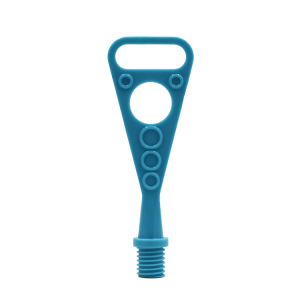
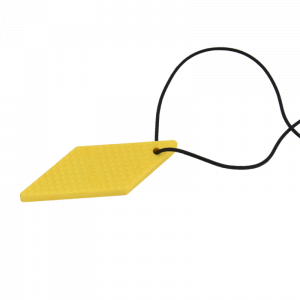
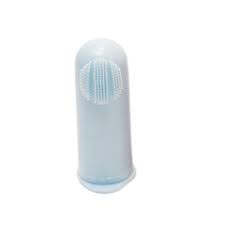
Leave a Comment
(0 Comments)